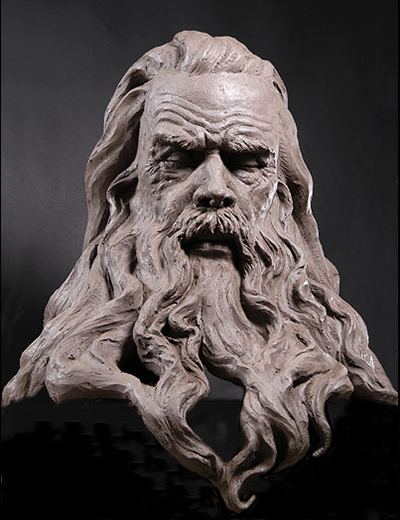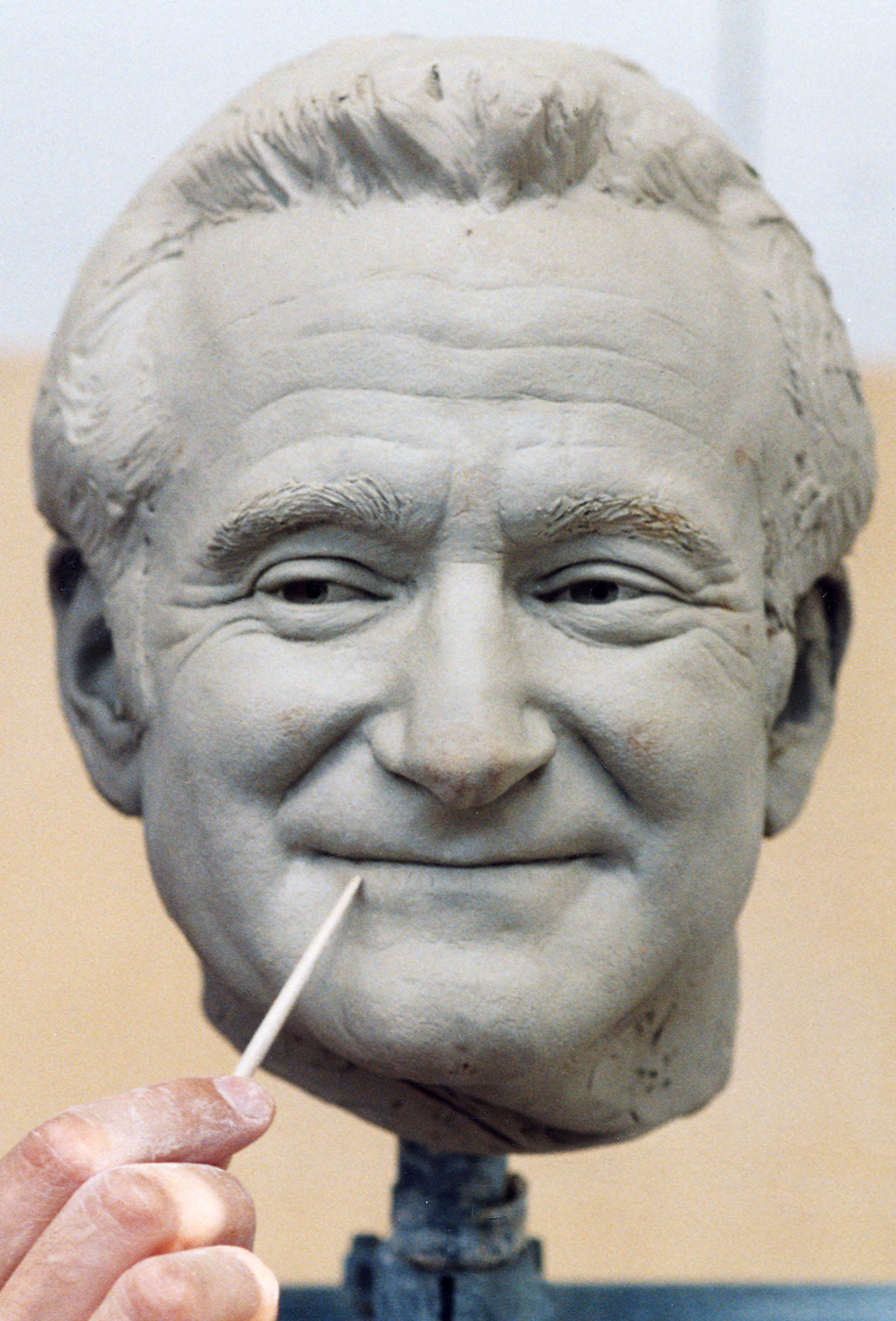The Evolution of Sculptures: From Old to Modern
The Development of Sculptures: From Ancient to Modern. Robert C Hitchcock Sculptor.
Sculpture, among the oldest types of art, has been an integral component of human people for centuries. From the old human beings of Egypt and Greece to the modern age, sculptures have advanced, showing changes in creative strategies, materials, and cultural impacts. This trip with time traces the development of sculptures, checking out the shifts stylishly, topic, and creative expression.
Starting with the ancient world, sculptures crafted from stone and later on bronze captured the significance of deities, rulers, and everyday life. The Renaissance duration saw a rebirth of classical sculpting techniques, as artists looked for to replicate the elegant forms of ancient Greek and Roman sculptures (Robert C Hitchcock Sculptor). In the modern era, artists tested typical limits, accepting abstraction and experimentation with new materials
This exploration will explore the diverse development of sculptures, exposing the abundant tapestry of artistic expression throughout various periods and cultures.

Ancient Sculptures: From Stone to Bronze
Ancient sculptures transitioned from being carved out of rock to being cast in bronze. This change marked a significant development in the art of sculpture, permitting for higher improvement and information in the completed jobs. Rock sculptures, while excellent in their very own right, were restricted by the nature of the material. Stone needed comprehensive forming and sculpting, usually leading to a more streamlined depiction of the subject.
The introduction of bronze as a medium for sculptures produced a transformation in artistic expression. Bronze used carvers the chance to develop natural and detailed forms that were not feasible with rock. The process of casting bronze enabled the development of numerous copies of a sculpture, enabling broader distribution and preservation of these creative masterpieces.
The shift from rock to bronze likewise saw a shift in the topic of sculptures. While rock sculptures mainly depicted gods, goddesses, and mythical figures, bronze sculptures started to reflect a more comprehensive variety of topics, consisting of day-to-day individuals and animals. This development of subject issue showcased the adaptability and adaptability of the bronze medium.
Renaissance Resurgence: Sculpting in the Classical Design
The Renaissance resurgence of sculpture experienced a rebirth in the classic design, building upon the advancements made during the shift from rock to bronze in old sculptures. Throughout this period, musicians sought to recreate the timeless aesthetic and suitables of appeal that were prevalent in old Greek and Roman sculptures.
One of the essential qualities of the Renaissance revival was the focus on naturalism and the human form. Carvers like Donatello and Michelangelo aim to catch the physiological information and expressions of their topics with extraordinary precision. They studied the human body and included their monitorings into their sculptures, leading to practical and lifelike representations.
An additional crucial element of the Renaissance rebirth was the exploration of point of view and depth. Musicians used techniques such as contrapposto, where the weight of the body is moved away, developing a feeling of activity and dynamism. They also explore different materials, consisting of marble and bronze, to achieve a degree of class and intricacy in their sculptures.

Innovation and the Avant-Garde: Breaking Typical Limits
Throughout the Innovation and Avant-Garde motions, artists pressed the boundaries of conventional imaginative conventions. This period, which arised in the late 19th and early 20th centuries, saw a dramatic change in the means artists approached sculpture. Denying the notion of art as simple imitation, modernist artists sought to check out brand-new kinds, materials, and ideas.
Among the crucial characteristics of modernist sculpture was the emphasis on abstraction. Carvers relocated away from sensible representations and rather concentrated on capturing the essence of the topic through simplified forms and geometric shapes. This separation from conventional representation enabled musicians to express their feelings and ideas in a more individual and subjective manner.

Contemporary Sculptures: Checking Out New Materials and Concepts
With a concentrate on discovering brand-new products and concepts, contemporary sculptures have reinvented the area of art. Artists today are pressing the borders of conventional sculpture by using cutting-edge products and experimenting with abstract concepts. These sculptures challenge conventional notions of meaning, type, and materiality, inviting customers to involve in a brand-new and provocative imaginative experience.
Contemporary artists are accepting a large range of materials, consisting of plastic, glass, steel, and also organic matter. They are not limited to the typical tool of stone or clay, enabling greater civil liberty and trial and error. This shift towards non-traditional materials has actually opened new opportunities for artists to develop sculptures that are vibrant, interactive, and aesthetically striking.
Along with exploring brand-new products, contemporary sculptures also look into facility and abstract concepts. Musicians are now checking out styles such as identity, social issues, and the environment, utilizing sculpture as a powerful tool for social discourse and self-contemplation. These sculptures challenge visitors to assume critically and involve with art on a deeper degree, triggering conversations and prompting emotional actions.
Worldwide Influences: Sculptural Practices From Around the World
Sculptural practices from various regions of the globe have substantially shaped the advancement of sculptures throughout background. The worldwide impacts on sculpture have been diverse and have added to the splendor and selection of artistic expressions. From the ancient worlds of Egypt, Greece, and Rome to the intricate carvings of Oriental cultures, each area has created its one-of-a-kind sculptural practices that have influenced artists across time.
In old Egypt, sculptures were produced primarily for spiritual and funerary purposes. The renowned sculptures of gods and pharaohs, such as the Great Sphinx and the bust of Queen Nefertiti, display the Egyptians' mastery of rock sculpting and their idea in the afterlife.

In ancient Rome, sculpture offered both political and artistic objectives. Roman sculptures typically illustrated emperors, generals, and mythological numbers, showing the power and splendour of the empire. The marble statuary of Augustus of Prima Porta and the significant Arch of Constantine are remarkable examples of Roman sculptural accomplishments.
Eastern sculptural traditions, especially in India, China, and Japan, have likewise had a profound effect on the development of sculptures. Japanese sculptures, affected by Buddhism, stress simpleness and serenity, seen in the calm statuaries of Buddha and the sophisticated art of bonsai.
The worldwide impacts on sculpture remain to develop in the contemporary period. Musicians today attract ideas from various sculptural customs, including new products, strategies, and concepts to create provocative and innovative artworks. The fusion of different cultural influences has generated a varied and vibrant sculptural landscape, reflecting the interconnectedness of our global society. As we aim to the future, it is particular that the international influences on sculpture will certainly remain to shape and redefine this ancient art form.
Final Thought
In final thought, the advancement of sculptures has actually seen a change from ancient stone and bronze works to the classical revival during the Renaissance. Today, contemporary sculptures discover brand-new materials and principles, while likewise attracting ideas from international sculptural customs.
From the ancient civilizations of Egypt and Greece to the modern age, sculptures have actually developed, reflecting modifications in artistic strategies, materials, and social influences.Starting with the ancient world, sculptures crafted from rock and later bronze captured the significance of divine beings, rulers, and day-to-day life.Ancient sculptures transitioned from being sculpted out of rock to being cast in bronze. While rock sculptures primarily portrayed gods, sirens, and mythological figures, bronze sculptures started to show a broader variety of topics, including everyday people and animals.In verdict, the development of sculptures has seen a shift from ancient rock and bronze functions to the timeless revival throughout the Renaissance.